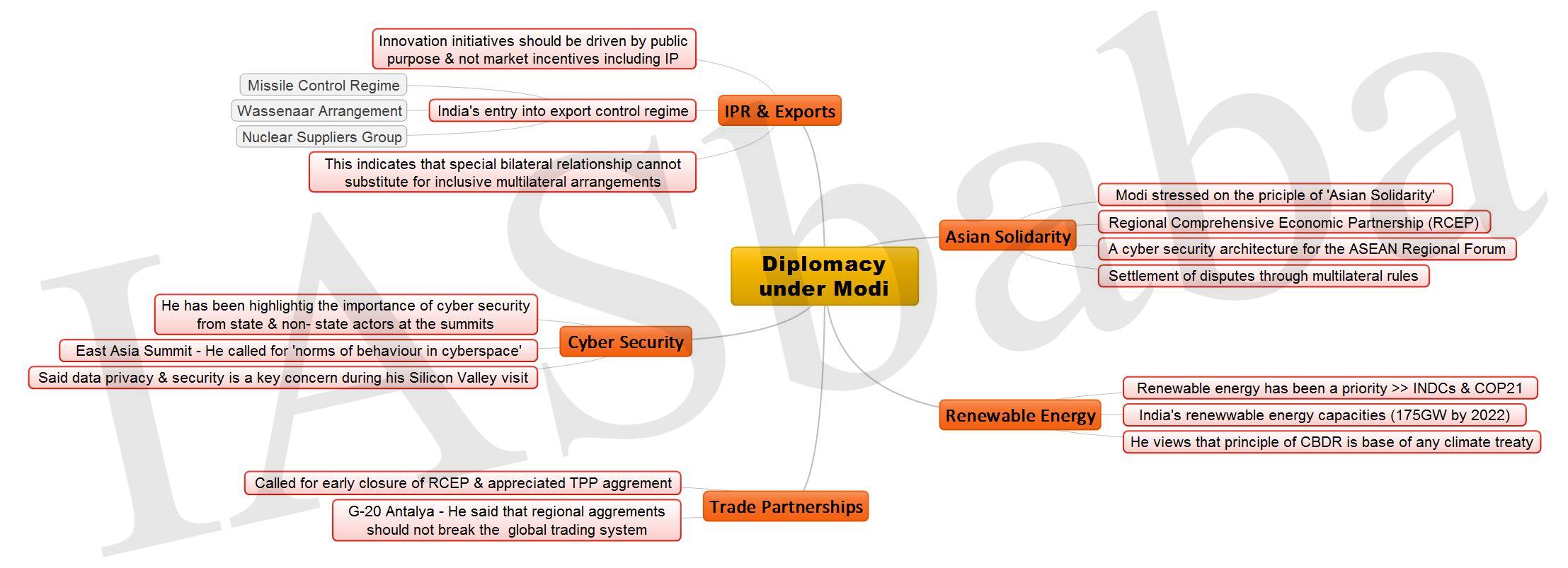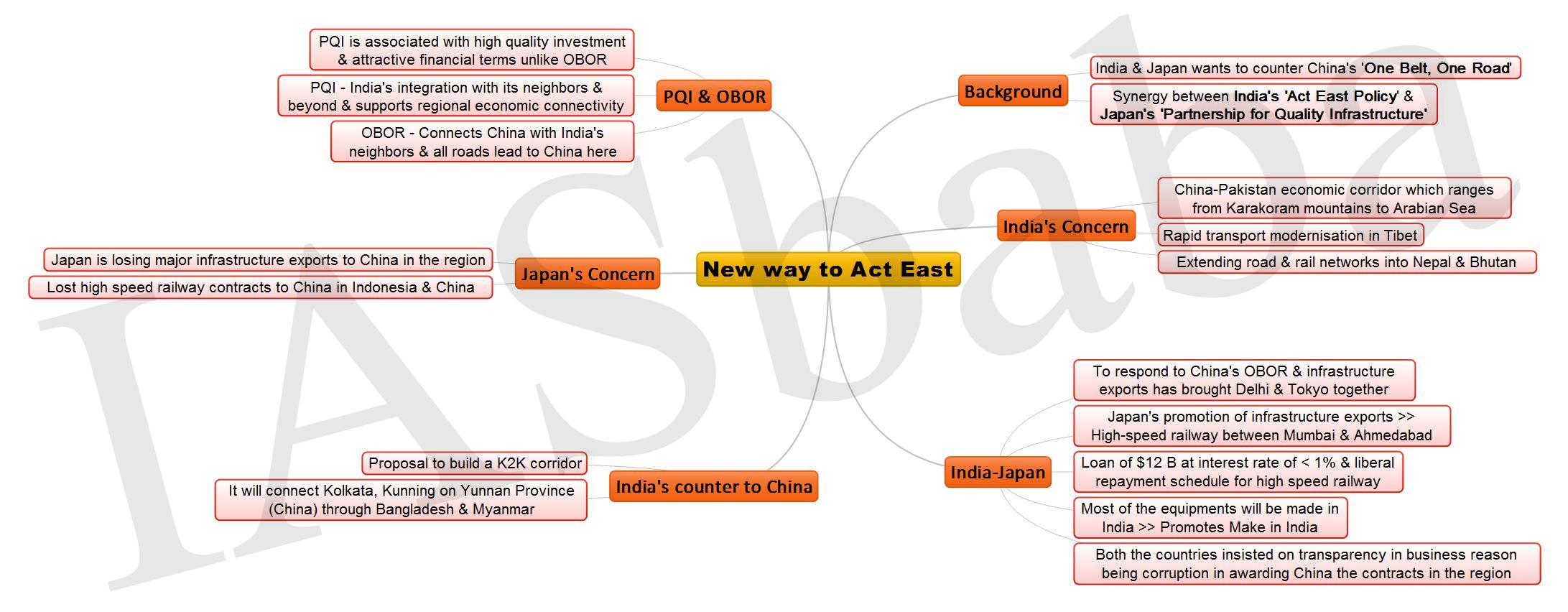IASbaba's Daily Current Affairs Analysis, IASbaba's Daily Current Affairs December 2015, National, UPSC
Archives
IASbaba’s Daily Current Affairs – 16th December, 2015
NATIONAL
TOPIC:
- General Studies 1: Role of women and women’s organization, population and associated issues, poverty and developmental issues; Social empowerment
- General Studies 2:
- Government policies and interventions for development in various sectors and issues arising out of their design and implementation.
- Issues relating to development and management of Social Sector or Services relating to Health, Education, Human Resources.
- Important International institutions, agencies and fora- their structure, mandate.
Human Development Index (HDI)
- HDI is a composite index meant to compare the well-being of people across countries and was first introduced by the UNDP in 1990.
- It is calculated as the geometric mean of three indicators: life expectancy, education and national income and uses this to create an overall score between 0 and 1.
- HDI combines:
- Life Expectancy Index:
- Average life expectancy compared to a global expected life expectancy
- Risen from 64.5 years (in 2005) to 68 years in 2014
- Life Expectancy Index:
- Education Index:
- Mean years of schooling measures access to knowledge; increased from 4.8 to 5.4 over the same period
- Expected years of schooling measures access to learning and knowledge; stagnant at 11.7 years since 2011
- Income Index (GNI at PPP; Std. of living)

The 2015 human development report has made use of new data released by the United Nations Population Division in ‘The 2015 World Population Prospect’, which has led to changes in life expectancy estimates. These revisions have impacted countries HDI values, and thus their rankings.
HDI & India
2014: India ranked 130 of 188 countries, up marginally from 135 in 2013
Highest inequality in outcomes: Education
Wide-level appreciation: Mahatma Gandhi National Rural Employment Guarantee scheme (MGNREGA : Don’t dismantle, Reform-
http://iasbaba.com/2015/11/iasbabas-daily-current-affairs-13th-november-2015/
)
Inequality pulls back India—India, as the average annual improvement in India’s human development index score in the last five years (2010-14) has slowed down markedly to 0.97 per cent, from the 1.67 per cent achieved in the earlier decade (2000-2010)
4% of its GDP only: Provision of ‘a basic and modest set of social security guarantees for all citizens with—
- Universal pension
- Basic health care
- Child benefits
- Employment & Schemes related
Report:
- Overall level of unemployment is lower
- Quality of employment (vulnerability) is poorer
Gender Inequality Index-GII:
India fares poorly in 2014, standing 130th among 155 countries
GII is based on
- Reproductive health (measured by maternal mortality and adolescent birth rates),
- Empowerment (measured by the share of parliamentary seats held by women and attainment in secondary and higher education by each gender),
- Economic activity (measured by the labour market participation rate for women and men)
Highlights:
- Global drop in the workforce participation rates for women, driven largely by declines in the last decade in India and China(declined from 35% in 1990 to 27% in 2013compared to 79.9% for men
- Lesser income than men
- Less likely than men to be in leadership positions (Eg: 12.2 per cent of Parliament seats are held by females
- Average adult man in India gets twice as many years of schooling as the average adult woman (only 27 per cent of adult women have achieved education up to at least the secondary level)
- Maternal mortality rate (MMR), or the number of deaths/100,000 live births: 190; For every 1,00,000 live births, 190 women die from pregnancy related causes; and the adolescent birth rate is 32.8 births per 1,000 women of ages 15-19
Multidimensional Poverty Index:
- Identifies multiple deprivations in the same households in education, health and living standards
- Over half (55.3 per cent) of India’s population is multi-dimensionally poor, while a further 18 per cent are close to this line
IASbaba’s Views:
- There is an increasing need to forge a new social contract between governments, society, and the private sector to ensure that all members of society have their needs taken into account in policy formulation
- A global deal need to be facilitated among governments to guarantee workers’ rights and benefits around the world and a decent work agenda, that will help promote freedom of association, equity, security, and human dignity in work can be formulated
Note:
Published By: UNDP;
Headquarter: New York
Formulated By:
- Indian Economist Amartya Sen
- Pakistani Economist MahbubulHaq
Connecting the Dots:
- What are the political and economic reasons behind the persistence of gender inequality in Indian society? Comment
NATIONAL
TOPIC:
- General Studies 2: Union and the States, issues and challenges pertaining to the federal structure, devolution of powers and finances up to local levels and challenges therein;
- Government policies and interventions for development in various sectors and issues arising out of their design and implementation; Governance issues
Retrograde step taken in the history of Panchayati Raj: Education qualification for candidates contesting Panchayat polls
- The Supreme Court approval of the Haryana government’s decision to prescribe educational qualifications for candidates contesting panchayat polls is the most retrograde step taken in the history of panchayat raj.
Haryana Panchayat Raj (Amendment) Act 2015
Prescribed educational qualification:
- Minimum matriculation for general merit candidates.
- Eight standard for general women and scheduled caste male.
- Fifth standard for scheduled caste women.
Other grounds of disqualification:
- Candidates who have failed to pay electricity bill arrears, or arrears to agriculture cooperative societies will be disqualified.
- Those candidates who do not have a functional toilet at home stands to be disqualified.
Supreme Court upholds the law
What did the judge observe?
Judge observed that it is education in human being that gives power to distinguish between right and wrong, good and bad.
Impact of the judgement
The impact of judgement is it would make 68% of the scheduled caste women and 41% of the scheduled caste men would be ineligible to contest panchayat elections.
Arguments against the judgement and law
- Why not educational qualification for PM and Ministers ?
- If the argument is that educational qualifications are not necessary for legislators but for panchayat representatives because they deal with executive matters, it follows that educational qualifications are even more required for state and Central ministers than for panchayat representatives.
- But apart from the provision that ministers have to be elected members of legislatures, there is nothing in our law to suggest that you should be a PhD to be PM, an MA to be a chief minister or cabinet minister, or a BA to be a state minister.
- If these very high offices do not require minimum educational qualifications, it seems a terrible act of injustice that persons without the prescribed educational qualifications be barred from election to panchayats.
- The definition of OBC
- OBCs are defined in the Constitution as classes that are “educationally and socially” backward.
- The definition itself shows that there are numerous classes in India, including in Haryana, who are wanting in education.
- That is precisely why they are classified as “backward”.
- Are they not being discriminated against in panchayat elections when their very status as “educationally backward” has caused the Constitution to demand affirmative action in their favour?
- Is this not even more true of our SC/ ST communities?
- Yes, much has been done to improve their educational, but the ground reality will show that the upper castes are dominant in the civil services and even in Parliament, and it is history and traditions that have rendered OBCs/ SCs/ STs as educationally deprived, compared to those slotted higher in the varna system.
- Instead of resolving this deadweight on our society, the Haryana decision endorsed by the apex court aggravates the social and educational discrimination faced by these gravely disadvantaged sections.
Way ahead
- India today has nearly 15 lakh elected women representatives in our local bodies.
- There are more elected women representatives in India alone than in the rest of the world put together.
- It is an achievement in gender empowerment that is without precedent in history or parallel in the world.
- As a result of panchayat empowerment, millions of women have been enabled to rise far higher in their social and family standing than their educational qualifications, or lack of them, would have allowed pre-panchayats.
- This is most true for SC and ST women.
- The apex court has delivered a body blow to justice for those most in need of it.
- Parliament must intervene.
Connecting the dots:
- Critically examine the impact of 73rd amendment on empowerment of rural women in India.
- There is increase in demand from the people regarding imposing educational qualification on legislators in the country. What is your opinion regarding, having educational qualifications for legislators. Substantiate.
MUST READ
Peace in the pipeline
Like dynamite- Raghuram Rajan’s cautionary tale on debt should put the focus on bond markets and governance standards
Paris triumph-The climate agreement strikes a fine balance between ambition, differentiation and finance
For detailed analysis of ‘Paris Summit: Climate change’, refer the below link
http://iasbaba.com/2015/12/iasbabas-daily-current-affairs-14th-december-2015/
Modi-Abe summit: Shaping the Indo-Pacific- The summit has added new dimensions to India-Japan cooperation for regional peace and stability
For detailed analysis of ‘India-Japan Ties’, refer the below link
http://iasbaba.com/2015/12/iasbabas-daily-current-affairs-15th-december-2015/
Suffer the little children– Overall, to improve child nutrition it is vitally necessary to improve healthcare services, women’s empowerment, social protection and ensure better water supply and sanitation
MIND MAPS
1. Diplomacy
2. Act East

















